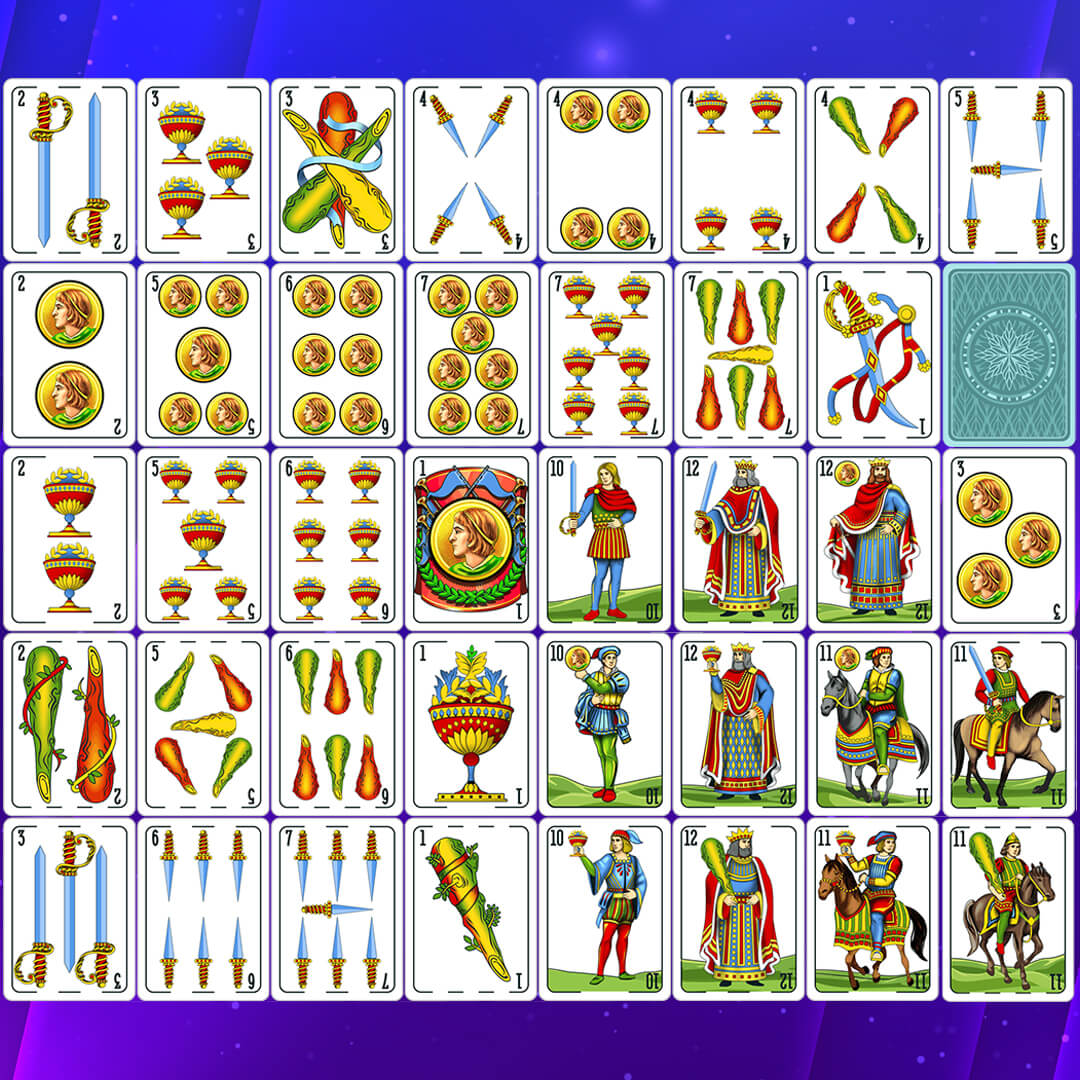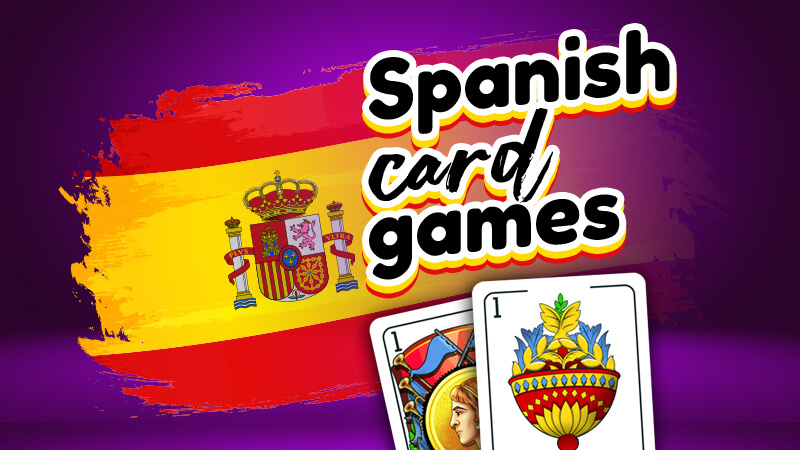Get ready to discover classics like Brisca and Tute, as well as lesser-known gems such as Aluette and Manilla. Prepare to gather your friends and family for endless hours of fun and excitement as we embark on this captivating journey through the realm of Spanish card games.
Spanish card games & unique Spanish cards
The Spanish card deck sets itself apart from the standard French deck. These cards are adorned with vibrant and intricate designs that showcase the country’s rich cultural heritage. The Spanish deck consists of four suits: cups, coins, swords, and clubs. Each suit features beautifully illustrated images, which reflect the traditional elements of Spanish culture.
Moreover, the Spanish deck also includes a set of court cards that differ from their French counterparts. In the Spanish deck, the court cards are represented by unique characters, each with their own distinctive traits and personalities. For instance, the king is depicted as a stern and authoritative figure, while the queen exudes elegance and grace. The knight stands tall, bearing a proud and fearless demeanor, and the jack portrays youthful energy and enthusiasm.

1. Escoba
Escoba is played with a deck of Spanish cards. The objective of the game is to accumulate points by capturing specific combinations of cards. Each card holds a value, and players strategically select cards from their hands to match the sum of the cards on the table. The twist lies in the scoring system, where players earn points by creating “escobas” or brooms. These escobas are formed by capturing cards that add up to fifteen, thus sweeping the table and earning the player additional points.
2. Brisca
Brisca is played with a Spanish deck of 40 cards. The objective of the game is to accumulate points by winning tricks, with each card holding a specific value. What sets Brisca apart is its unique hierarchy system, where certain cards hold special significance. The highest-ranking card is the Ace, followed by the three, the King, and the Knight. These cards, known as “figuras,” carry more value and possess the power to turn the tides of the game.
3. Tute
Tute is played with a Spanish deck of 40 cards. The game revolves around capturing specific cards and earning points by winning tricks. Tute is typically played with two teams of two players each, adding a collaborative aspect to the gameplay.
Tute’s unique charm lies in its intricate ranking system. The game assigns varying values to different cards, elevating the significance of certain combinations. The highest-ranking card is the King, followed by the Knight, the Horse, and the Sota (Jack). These cards, known as “figuras,” hold considerable value and can significantly influence the outcome of each round.
4. Chinchon
Chinchon is played with a Spanish deck of 40 cards. The goal is to be the first player to form a hand with seven cards of the same rank or sequence, known as a “chinchón.” This task demands careful planning and astute decision-making.
Chinchon’s gameplay revolves around melding cards and strategically discarding unwanted ones. Players must assess the value and potential of each card in their hand, weighing the risks and benefits of holding onto certain cards or discarding them for potential future use. Additionally, players can also try to disrupt their opponents’ plans by blocking certain card combinations or strategically picking cards from the discard pile.
5. Cuarenta
Cuarenta is played with a Spanish deck of 40 cards. The objective is to reach a target score of 40 points, hence the name “Cuarenta.” In Cuarenta you have to win tricks. The players must assess the best time to play their cards to maximize their chances of capturing valuable combinations. Timing is crucial, as players aim to secure high-ranking cards while also avoiding falling into the trap of overcommitting too early in the game.
6. Botifarra
Botifarra is played with a Spanish deck of 48 cards. The game typically accommodates four players in partnerships of two. Botifarra’s objective is to accumulate points by winning tricks and capturing specific card combinations.
Each card holds a distinct value, and players must employ their skills to assess the strength of their hand, anticipate their opponent’s moves, and decide the optimal time to play their cards. The game’s complexity is elevated by the inclusion of specialty cards, such as the trump suit, which adds an element of unpredictability and strategic decision-making.
7. Ombre
Ombre is played with a Spanish deck of 40 cards. The game involves three players who compete to accumulate points by winning tricks and successfully fulfilling bids they have made. Ombre’s distinct feature lies in its bidding system, which adds a layer of excitement and anticipation. Players must carefully assess their hand’s strength and bid accordingly, predicting the number of tricks they can win. The highest bidder becomes the “Ombre” and chooses the trump suit, gaining a tactical advantage.
8. Julepe
Julepe is played with a Spanish deck of 40 cards. The game typically accommodates two to four players, adding flexibility and adaptability to the gameplay. Julepe’s objective is to win tricks containing high-ranking cards and special combinations. Each card holds a specific value, and players must carefully plan their moves to maximize their point accumulation. The game uses trump cards, shifting the balance of power in a trick.
9. Manilla
Manilla is played with a Spanish deck of 40 cards. The game involves two teams of two players each, who compete to accumulate points through successful trick-taking. Manilla uses trump cards and requires strategic thinking for the player to take as many tricks as they can. The winner of each trick becomes the lead for the next trick. If someone manages to win all twelve tricks, that’s called Capote.
10. Aluette
Aluette is a unique trick-taking game played by four players in teams of two. It employs a 48-card Spanish-suited pack. The goal is to win more tricks than any individual player or be the first to achieve equality in trick wins. Aluette stands out due to its disregard for traditional suits. Its gameplay mechanism shares similarities with early games like Trut and Put, where 3s, 2s, and aces hold high value.
Now read our list of Popular party card games.


